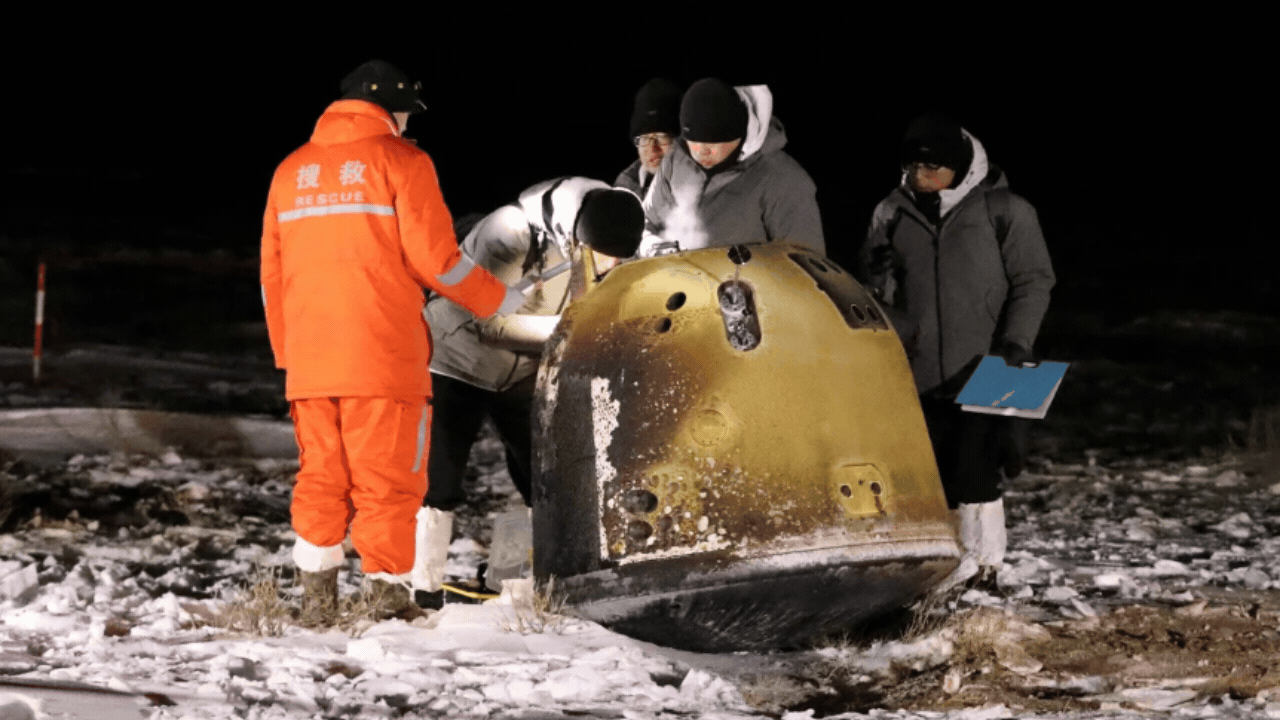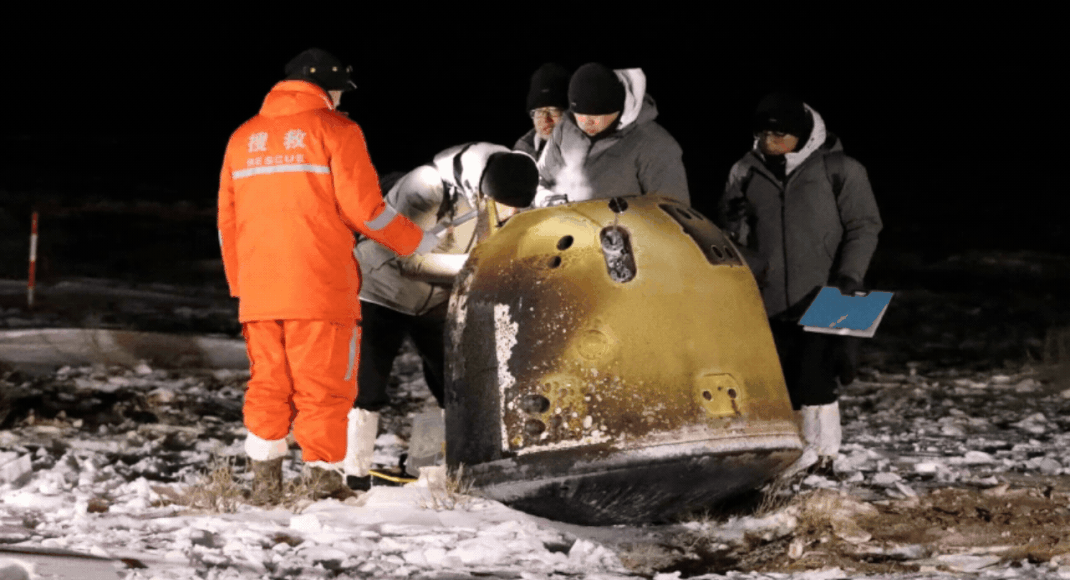
In a groundbreaking discovery, Chinese scientists have identified graphene in lunar soil samples collected by the Chang’e-5 mission. This finding challenges existing theories about the moon’s formation and opens up new avenues for scientific exploration.
Graphene, a single layer of carbon atoms arranged in a hexagonal lattice, is known for its extraordinary strength, conductivity, and flexibility.Its presence in lunar soil raises questions about the moon’s history and the materials it contains. Traditional theories of the moon’s origin suggest it formed from debris resulting from a collision between Earth and a Mars-sized body. The discovery of graphene suggests there might be additional processes at play that contributed to the moon’s composition, a report in the South China Morning Post said.
The Chang’e-5 mission, which returned to Earth in December 2020, brought back approximately 1.7 kilograms of lunar soil. Researchers have been meticulously analyzing these samples since then, and the detection of graphene—a form of pure carbon known for its remarkable properties—has sparked significant interest in the scientific community.
Dr Li Chunlai, a senior scientist at the National Astronomical Observatories of the Chinese Academy of Sciences, expressed excitement over the discovery. “The presence of graphene in lunar soil suggests that there might be more complex carbon chemistry occurring on the moon than we previously thought,” he said. This discovery has the potential to reshape our understanding of lunar geology and the processes that shaped the moon.
Professor Wang Chuanlin from Peking University highlighted the significance of this finding, saying, “This discovery challenges the prevailing theories of the moon’s formation and prompts us to re-evaluate the processes that occurred in the early solar system.” He emphasized the need for further research to understand how graphene formed on the moon and what it reveals about the moon’s geological history.
The Chinese scientists acknowledged that meteorite impacts could also contribute to the formation of graphitic carbon on the moon, as suggested by Nasa researchers who found graphite in Apollo 17 mission samples in 2010. However, the Chinese team emphasized that their study is the first to confirm the presence of natural graphene in lunar soil samples by analyzing its microstructure and composition using various characterization techniques.
The Chang’e-5 mission marked a significant milestone in China’s lunar exploration program, being the first mission to bring back lunar samples since the Soviet Union’s Luna 24 mission in 1976. The mission’s success has paved the way for future lunar exploration endeavors, with China planning additional missions to further study the moon’s surface and its resources.
As scientists continue to analyze the Chang’e-5 samples, the discovery of graphene is expected to lead to new insights into the moon’s composition and history. This finding not only challenges existing theories but also highlights the importance of continued lunar exploration in uncovering the mysteries of our closest celestial neighbor.
Graphene, a single layer of carbon atoms arranged in a hexagonal lattice, is known for its extraordinary strength, conductivity, and flexibility.Its presence in lunar soil raises questions about the moon’s history and the materials it contains. Traditional theories of the moon’s origin suggest it formed from debris resulting from a collision between Earth and a Mars-sized body. The discovery of graphene suggests there might be additional processes at play that contributed to the moon’s composition, a report in the South China Morning Post said.
The Chang’e-5 mission, which returned to Earth in December 2020, brought back approximately 1.7 kilograms of lunar soil. Researchers have been meticulously analyzing these samples since then, and the detection of graphene—a form of pure carbon known for its remarkable properties—has sparked significant interest in the scientific community.
Dr Li Chunlai, a senior scientist at the National Astronomical Observatories of the Chinese Academy of Sciences, expressed excitement over the discovery. “The presence of graphene in lunar soil suggests that there might be more complex carbon chemistry occurring on the moon than we previously thought,” he said. This discovery has the potential to reshape our understanding of lunar geology and the processes that shaped the moon.
Professor Wang Chuanlin from Peking University highlighted the significance of this finding, saying, “This discovery challenges the prevailing theories of the moon’s formation and prompts us to re-evaluate the processes that occurred in the early solar system.” He emphasized the need for further research to understand how graphene formed on the moon and what it reveals about the moon’s geological history.
The Chinese scientists acknowledged that meteorite impacts could also contribute to the formation of graphitic carbon on the moon, as suggested by Nasa researchers who found graphite in Apollo 17 mission samples in 2010. However, the Chinese team emphasized that their study is the first to confirm the presence of natural graphene in lunar soil samples by analyzing its microstructure and composition using various characterization techniques.
The Chang’e-5 mission marked a significant milestone in China’s lunar exploration program, being the first mission to bring back lunar samples since the Soviet Union’s Luna 24 mission in 1976. The mission’s success has paved the way for future lunar exploration endeavors, with China planning additional missions to further study the moon’s surface and its resources.
As scientists continue to analyze the Chang’e-5 samples, the discovery of graphene is expected to lead to new insights into the moon’s composition and history. This finding not only challenges existing theories but also highlights the importance of continued lunar exploration in uncovering the mysteries of our closest celestial neighbor.
Source link

